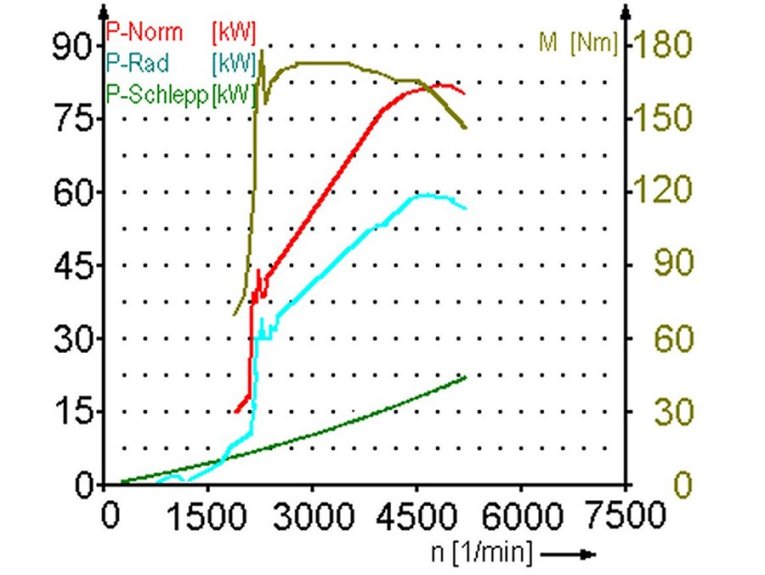
|
Performance Measurement (analysis)

Assignment
To be able to determine the effective performance output on the flywheel or on the
clutch, the drag effect performance loss must be
added to the performance at the wheel on the performance test bench display. For this reason, the clutch is depressed with the achievement of the maximum RPMs and thus, enables the test bench to determine, with
decreasing wheel speed, the drag-moment. This shows the amount of performance which has been lost on the way from the clutch to the drums.
Function
In the above figure, the result of a test run is shown. By the RPM level, it can be seen that a diesel engine with a side combustion chamber
was tested. For direct fuel injection it is a little too high, for petrol engines a little too
low. Also the starting-off difficulties between idling speed
and approx. 2500 RPM are recognisable. On the right axis the torques, can be read, on the left the various performances. The perfomance at the wheel (blue) was determined first. Then with the clutch depressed, the
computer determined the drag effect performance loss (brown) and then added them to each RPM area of the performance at the wheel. The result of this is the standard performance (red). The engine developed a
maximum of approx. 82 kW at almost 5000 RPMs, and a little more than 170 Nm at 3000 RPMs. 09/09
Subjects
Engine test bench
Rolling test bench
|
|